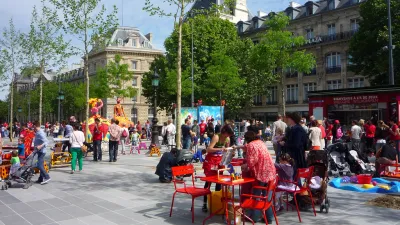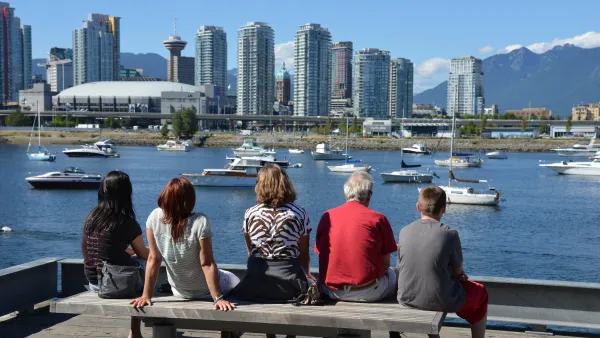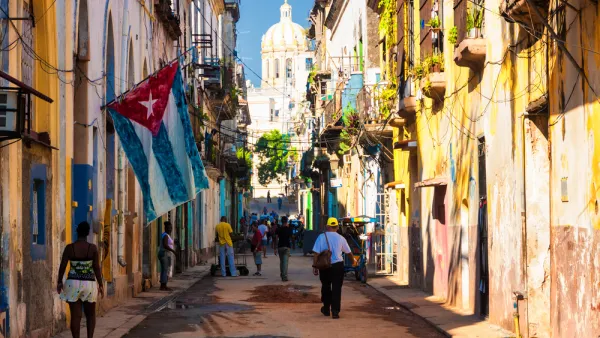The Project for Public Spaces celebrates its 40th anniversary this year, spanning a seismic shift from modernist planning and urban decay of the 1970s to the urban resurgence and focus on smart growth of today. PPS's Ethan Kent reflects.

The Project for Public Spaces, one of the country's leading advocates for placemaking and revitalization of public spaces, was founded in the depths of urban decay in 1975. At the time, big projects and top-down planning held sway. Inspired by Jane Jacobs, founder Fred Kent advocated for many of the urban innovations that are commonplace today.
His son Ethan continues that work, contending that, for all its changes, contemporary policymaking still has not embraced placemaking as a core principle.
One of the challenges lies in the amorphous definition of "place." Even if "place" is important, if policymakers and planners cannot define it, they often have trouble promoting it. In a Q&A for Policy Innovations, Kent said:
"A place is how we are attached to our community, how we experience our world and our community. It's really the patterns of social activity, the cultural openness, commercial and cultural relationships that make a place. There is no formal discipline that is really delivering "place." Just having a space be public space alone isn't often giving value to places, and design is only a small part of what makes a place work."
That's changing with a "place capital metric" being used in Adelaide, Australia, and promoted by PPS. "We measure how businesses are doing, how many people are using the spaces, stationary activity, whether people are gathering in groups, whether there are enough women, children, and elderly in the public space, etc.," said Kent.
Then again, there are even more ambiguous ways to evaluate cities—not by amenities and attractiveness but by the emotional connection between cities and their inhabitants:
"The livability or quality of life lists [that are published every year] look at cities that best balance economic competitiveness and leisure activity, which are the most expensive cities in the world....I think is more about loveabilty, attachment and comfort; and those qualities can occur in some of the poorest parts of the world too."
FULL STORY: What Makes a City Great? It’s not the Liveability but the Loveability

National Parks Layoffs Will Cause Communities to Lose Billions
Thousands of essential park workers were laid off this week, just before the busy spring break season.

Retro-silient?: America’s First “Eco-burb,” The Woodlands Turns 50
A master-planned community north of Houston offers lessons on green infrastructure and resilient design, but falls short of its founder’s lofty affordability and walkability goals.

Delivering for America Plan Will Downgrade Mail Service in at Least 49.5 Percent of Zip Codes
Republican and Democrat lawmakers criticize the plan for its disproportionate negative impact on rural communities.

Test News Post 1
This is a summary

Test News Headline 46
Test for the image on the front page.

Balancing Bombs and Butterflies: How the National Guard Protects a Rare Species
The National Guard at Fort Indiantown Gap uses GIS technology and land management strategies to balance military training with conservation efforts, ensuring the survival of the rare eastern regal fritillary butterfly.
Urban Design for Planners 1: Software Tools
This six-course series explores essential urban design concepts using open source software and equips planners with the tools they need to participate fully in the urban design process.
Planning for Universal Design
Learn the tools for implementing Universal Design in planning regulations.
EMC Planning Group, Inc.
Planetizen
Planetizen
Mpact (formerly Rail~Volution)
Great Falls Development Authority, Inc.
HUDs Office of Policy Development and Research
NYU Wagner Graduate School of Public Service




























